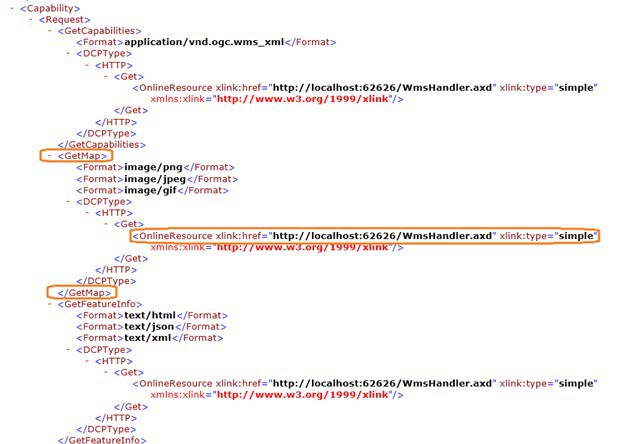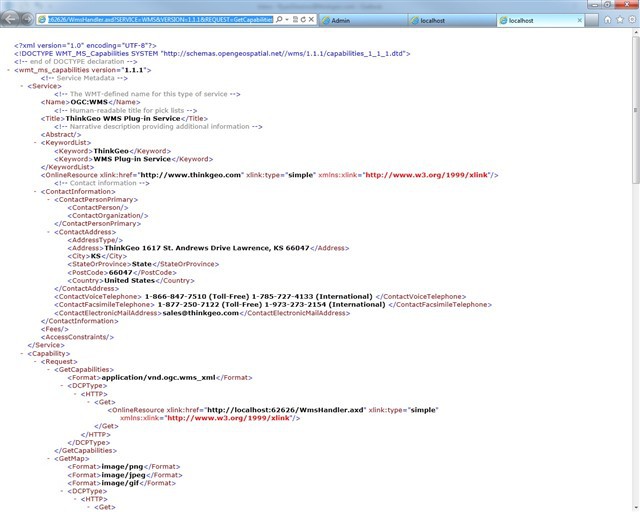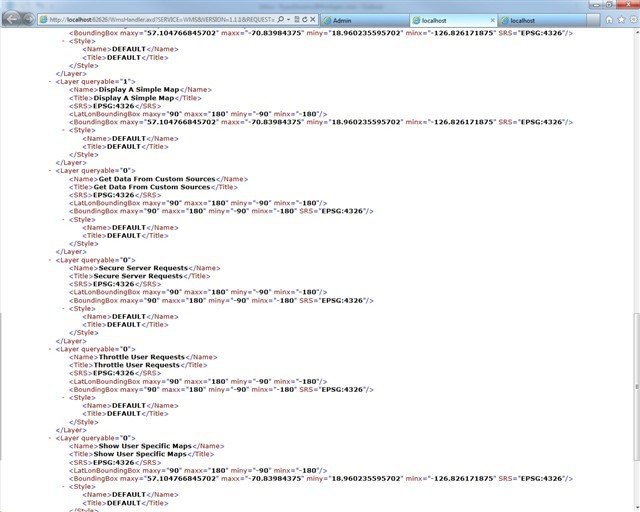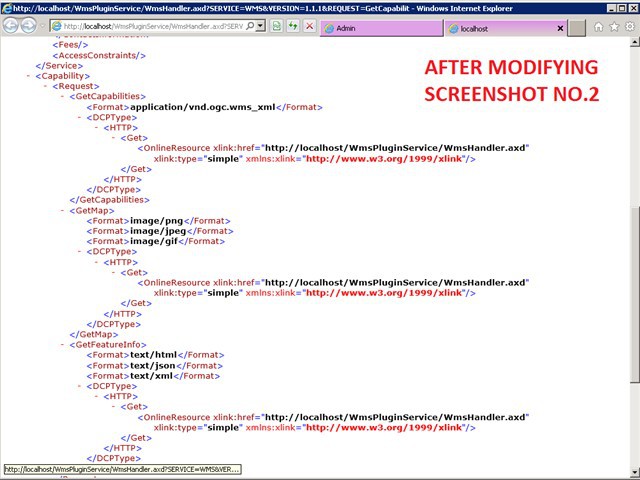Rumeysa,
I think you are a bit confused. The changes you made to the WmsHandlerCapabilities.xml are okay but are not really necessary.
The GetCapabilites command is something you send to a WMS server in order to see what layers the WMS can provide you.
It is an informational page about what the WMS server can provide.
When you send GetCapabilities the WMS server provides you an XML file that serves as a 'Table of Contents' for the Layers that the WMS Server can provide. Some of the contents of this file are configurable by modifying the WmsHandlerCapabilities.xml file but most of the GetCapabilities XML is automatically generated by the WMS PluginService. So in the second and third screenshots that I provided (shown below for convenience) you can see that in the Layer section there are multiple available Layers.
Available Layers include:
Simulate Vehicle Tracking
Dynamically Draw on Maps
Change Style By User
Display A Simple Map
Get Data from Custom Sources
etc...
This layer listing along with the SRS, LatLonBoundingBox, and Style information for each Layer are created from the Plugins that you create and add to the WMSPlugInService. The WMS PluginService reads the plugin dlls you create and then creates the XML for each of them.
Each of these layers is made available by creating a WMSPlugin, compiling it into a dll and adding that dll to the WMSPlugInService. You then deploy the WMSPluginService to your server with all the necessary WMSPlugin - Dlls.
This is the process detailed in the Quick Start Guide.
So why all the explanation about the GetCapabilities?
Because the GetCapabilities shows you what parameters you should send in from your OpenLayers client to get the maps that you want.
If you have the WMSPluginService running on your IIS server surely you have setup a host header for this site?
So let's say you setup wms.myspecialserver.com for your wms server site.
Let's then say for testing you deployed the 'Display A Simple Map' WMSPlugin to the WMSPluginService. The name that is specified for this plugin in the GetNameCore() is "Display A Simple Map".

The client will use the 'GetMap' command to request tiles from the WMS server.
Let's look at the GetCapabilities XML again and find out what our parameters are for our WMS request:
GetMap section - URL: wms.myspecialserver.com/WmsHandler.axd

Layer: "Display A Simple Map"
Style Parameter: "Default"

So using the information from our GetCapabilities we can put together the URL and parameters you need to send in from your client.
For OpenLayers I would recommend referring to the OpenLayers' API Documentation to see how to arrange these parameters correctly: dev.openlayers.org/apidocs/f....Layer.WMS
Below is a sample from the Open Layers documentation showing a sample of a request:
var wms = new OpenLayers.Layer.WMS("NASA Global Mosaic","wms.jpl.nasa.gov/wms.cgi",{layers: "modis,global_mosaic"});
You might try replacing the above with the information you find in the GetCapabilities of your WMS Server.








